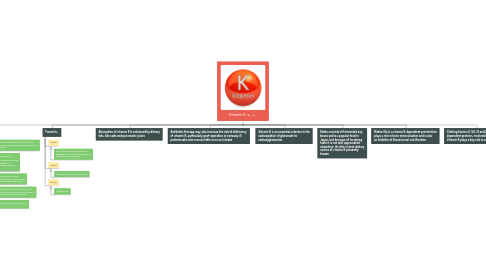Vitamin K
by Simon Ashby

1. Found in...
1.1. Type K1
1.1.1. Green leafy vegetables, cruciferous vegetables, cottage cheese, soybean oil, natto (fermented soybeans)
1.2. Type K2
1.2.1. is synthesised in the gut by bacteria.
1.3. Type K3
1.3.1. synthetic form
2. Vitamin K is an essential cofactor in the carboxylation of glutamate to carboxyglutamate.
3. Matrix Gla is a vitamin K dependent protein that plays a role in bone mineralisation and is also an inhibitor of blood vessel calcification.
4. Clotting factors II, VII, IX and X are vitamin K dependent proteins, involved in coagulation. Vitamin K plays a key role in coagulation.
5. Absorption of vitamin K is enhanced by dietary fats, bile salts and pancreatic juices
6. Roles
6.1. Blood clotting – activates blood coagulation proteins. It is a cofactor for carboxylation of glutamate in precursor proteins involved in blood clotting
6.2. Bone health – essential for bone mineralisation. Vitamin K also now recognised as being important in the prevention of calcification of soft tissue, including arteries
6.3. Newborn babies are particularly at risk of vitamin K deficiency, as vitamin K stores are low at birth, and babies are born with sterile guts
6.4. Research is beginning to identify many other important physiological processes which are influenced by vitamin K – E.g. anti-cancer, anti-inflammatory, antioxidant.
6.5. Vitamin K can decrease osteoclasts and suppress bone resorption
7. Antibiotic therapy may also increase the risk of deficiency of vitamin K, particularly post-operative or seriously ill patients who also receive little or no oral intake
8. Natto consists of fermented soy beans and is a popular food in Japan, but because of its strong taste it is not well appreciated elsewhere. It is the richest dietary source of vitamin K presently known


